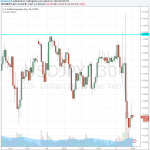Jason Furman was an economic policy insider through all eight years of the Obama administration, with “oughly the first half of them as Deputy Director of the National Economic Council and the second half of them as Chairman of the Council of Economic Advisers.” In the Arnold C. Harberger Distinguished Lecture on Economic Development at the UCLA Burkle Center for International Relations, Furman reflects on “The Role of Economists in Economic Policymaking” (April 27, 2017).
Furman has a pleasantly wry and discursive tone, with lots of anecdotes that mix together stories of success and failure. At least for readers like me, it’s a tone that carries far more appeal and persuasive power than feverish oratory set to the sound of trumpets. For example, here are some of Furman’s thoughts on the four things that economists have to offer when the answer to a policy question is not known.
The first is just describing the data. Describing the data does not tell you what caused what. It does not tell you what is the right policy or what is the wrong policy. But it can help you at least figure out what questions you should be asking, what areas you should be looking at to solve those questions, and what you can do about them. The data can be complicated. The government released two different measures of economic growth in the fourth quarter of 2016, one was 1.0 percent and one as 2.1 percent. The government also released two different measures of job growth in March 2017, 98,000 jobs and 472,000 jobs. Moreover, for the first quarter of this year the data tells a divergent story—with strong employment growth and strong “soft data”, like surveys of confidence, but much weaker GDP growth and weaker “hard data”, like actual sales numbers. I have spent a lot of time on these issues and developed a number of rules of thumb, almost all of which can be summarized by saying that you should look at a wide range of data, ideally smoothed over a longer period of time—without placing too much weight on any given indicator … Data description can be more sophisticated than just looking at single numbers or even trends. Sometimes it helps to decompose a number into its components to identify what is driving it, at least in an arithmetic sense.













Leave A Comment